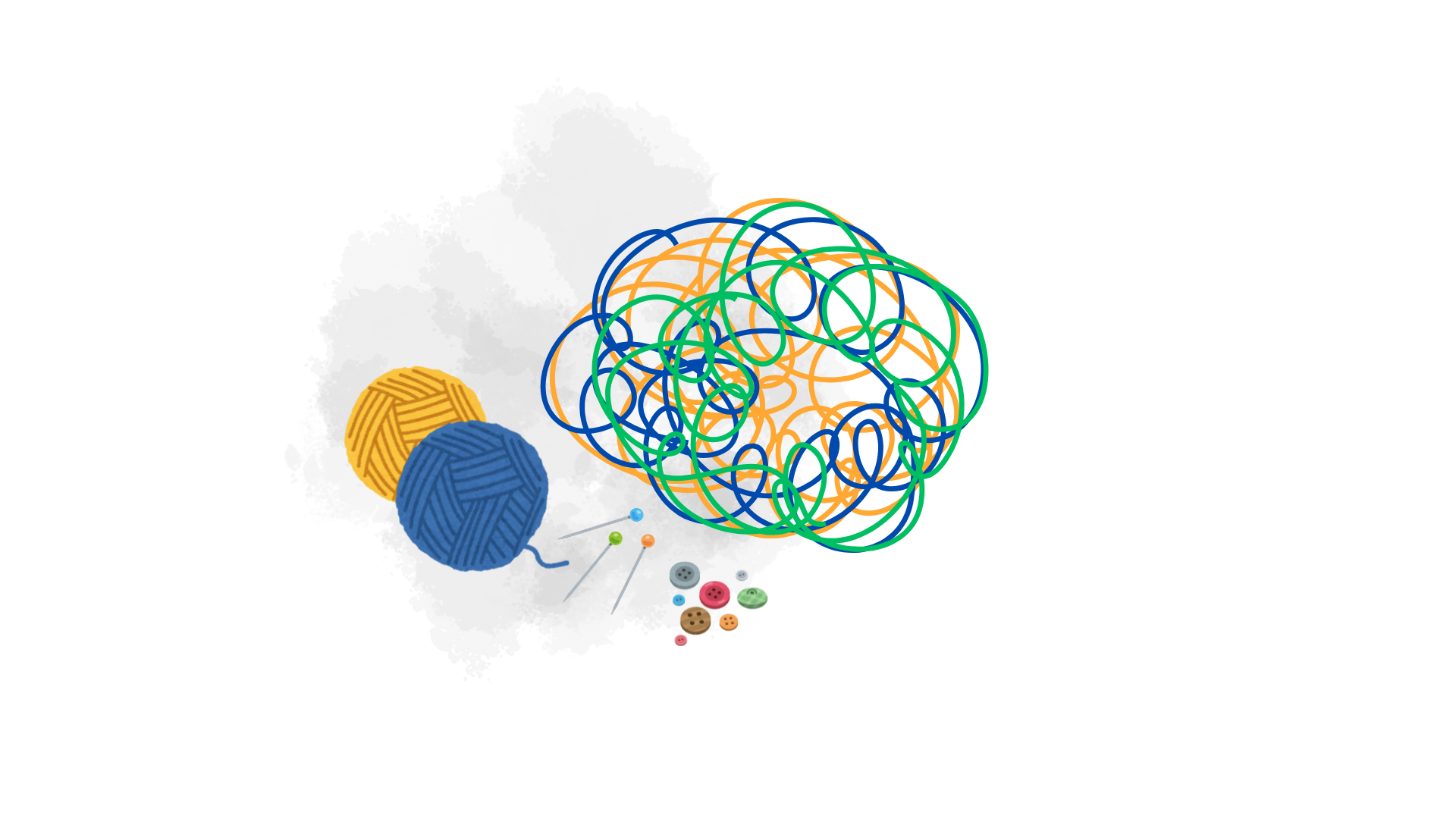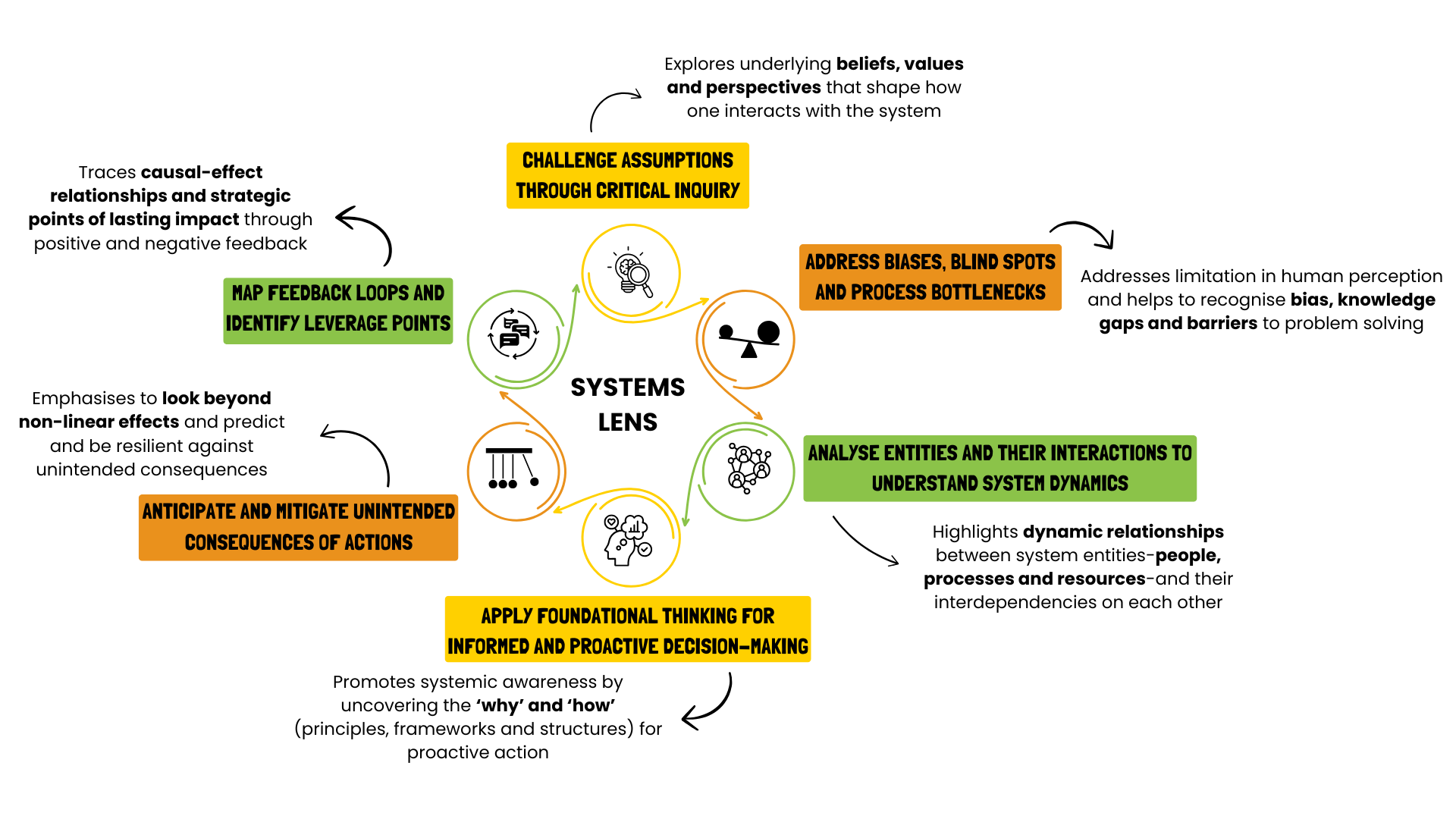BY @ANAGA SIVARAMAKRISHNAN | 3 MIN READ | PUBLISHED ON 14.02.2025
Untangling Problems Through a Systems Lens
Social problems are complex. At Apurva, we see this as a worn-out jumble of yarn threads tangled together, with different colours representing distinct challenges. The pulling and yanking knot them further beyond comprehension. Social problems are interconnected, interdependent, diverse and ever evolving. Solving these complex social problems requires one to understand the diverse threads as well as the shifts and distortion they create in the broader system. Through a holistic systems lens, Apurva helps to untangle these complexities.

Barry Richmond stated that “people embracing Systems Thinking position themselves such that they can see both the forest and the trees (one eye on each)”. This principle is at the core of our approach at Apurva, shaping the way we solve complex problems. For example, when you are trying to unravel a bright yellow thread, but you are aware of the dull blue and light orange yarns nearby, where any movement can affect them, leading to unintended consequences. One has to be mindful of their actions and its multiple spillovers-both positive and negative-across physical, social, political and economic factors of domains. With a systems approach, we gain holistic perspectives, helping us to anticipate shifts and design efficient, effective solutions.
How do we do it?
Apurva INSIGHTS, one of our core offerings, uses a systems lens to examine complexities of problems and solutions, and to highlight connections across themes and topics. Drawing from curated, democratised knowledge of organisations and ecosystems, enables Change Leaders to view interconnected parts and trace how they interact with one another continuously, adapting to shifts in real time.

These six predefined prompts serve more than one purpose. For instance:

With long-term perspectives, mapped interconnections and adaptability to emerging complexities, a holistic systems lens offers a starting point to unravel the tangled ball of different threads. This lens is complemented with a community-centric, collaborative approach, where all actors in the ecosystem are working together to solve problems. This offers a more comprehensive view. At Apurva, we achieve this by democratising knowledge and approaches, thereby bridging the gap between the last-mile communities and diverse actors across the ecosystem. This results in inclusive, emerging collective wisdom that creates a more comprehensive and grounded understanding of complex problems. Together, this approach enables Change Leaders to design long-term, proactive solutions for a more sustainable impact.
References
- Adhikari, S. (2024). Connecting the dots: Systems thinking for climate solutions. India Development Review. https://idronline.org/article/climate-emergency/connecting-the-dots-systems-thinking-for-climate-solutions/
- SaAdhikari, S and Philip, S. (2024). Systems thinking for climate: What nonprofits need. India Development Review. https://idronline.org/article/ecosystem-development/systems-thinking-for-climate-what-nonprofits-need/
- Both, T. (2018). Human-Centered, Systems-Minded Design. Stanford Social Innovation Review. https://doi.org/10.48558/DWBY-RF41
- Mathur, M. (2023). We need a system for systems change. India Development Review. https://idronline.org/article/perspectives/we-need-a-system-for-systems-change/
- Richmond, B. (1994). System dynamics/systems thinking: Let’s just get on with it. System Dynamics Review, 10(2-3), 135-157. https://www.iseesystems.com/resources/articles/download/lets-just-get-on-with-it.pdf
.png)